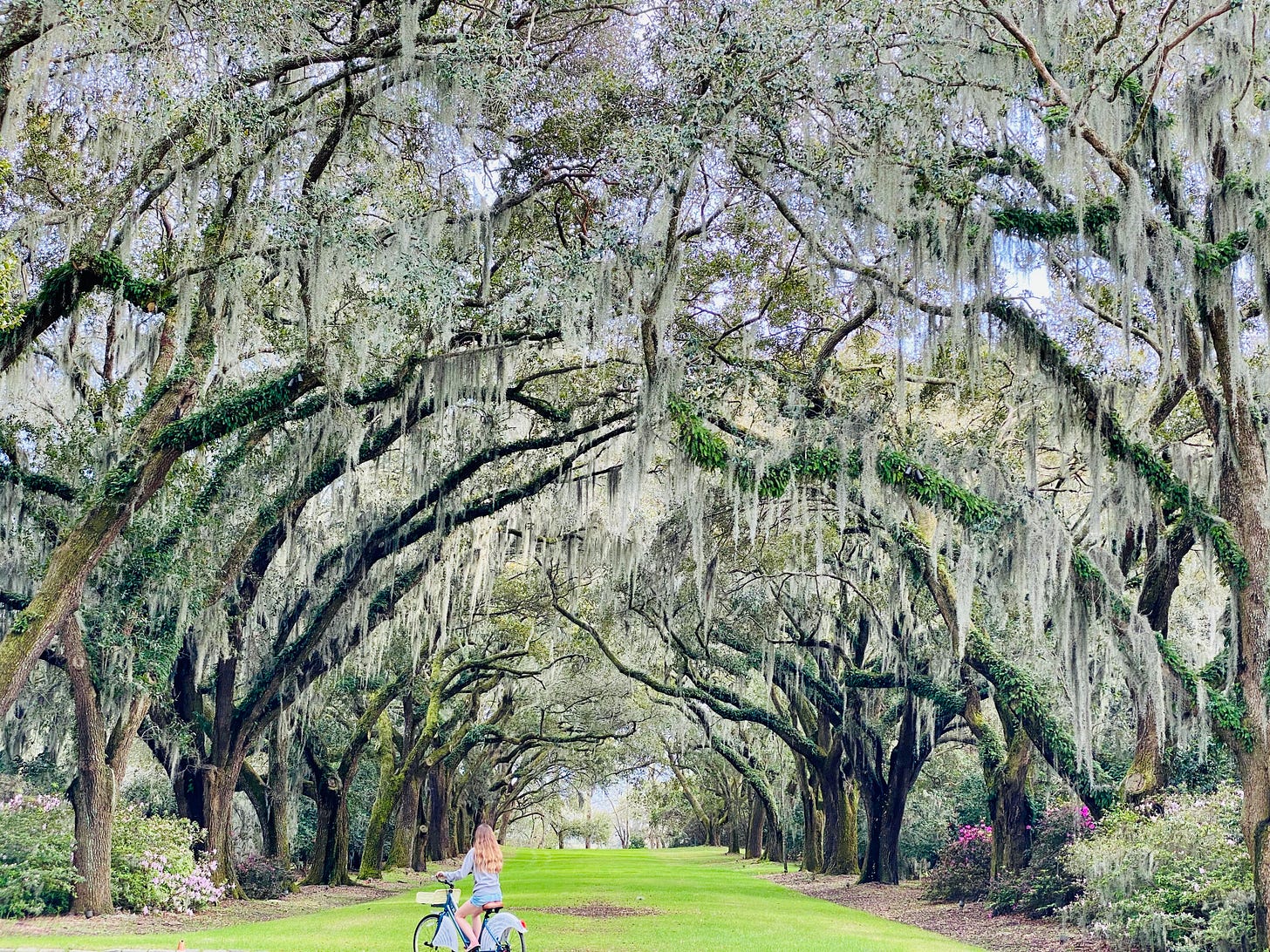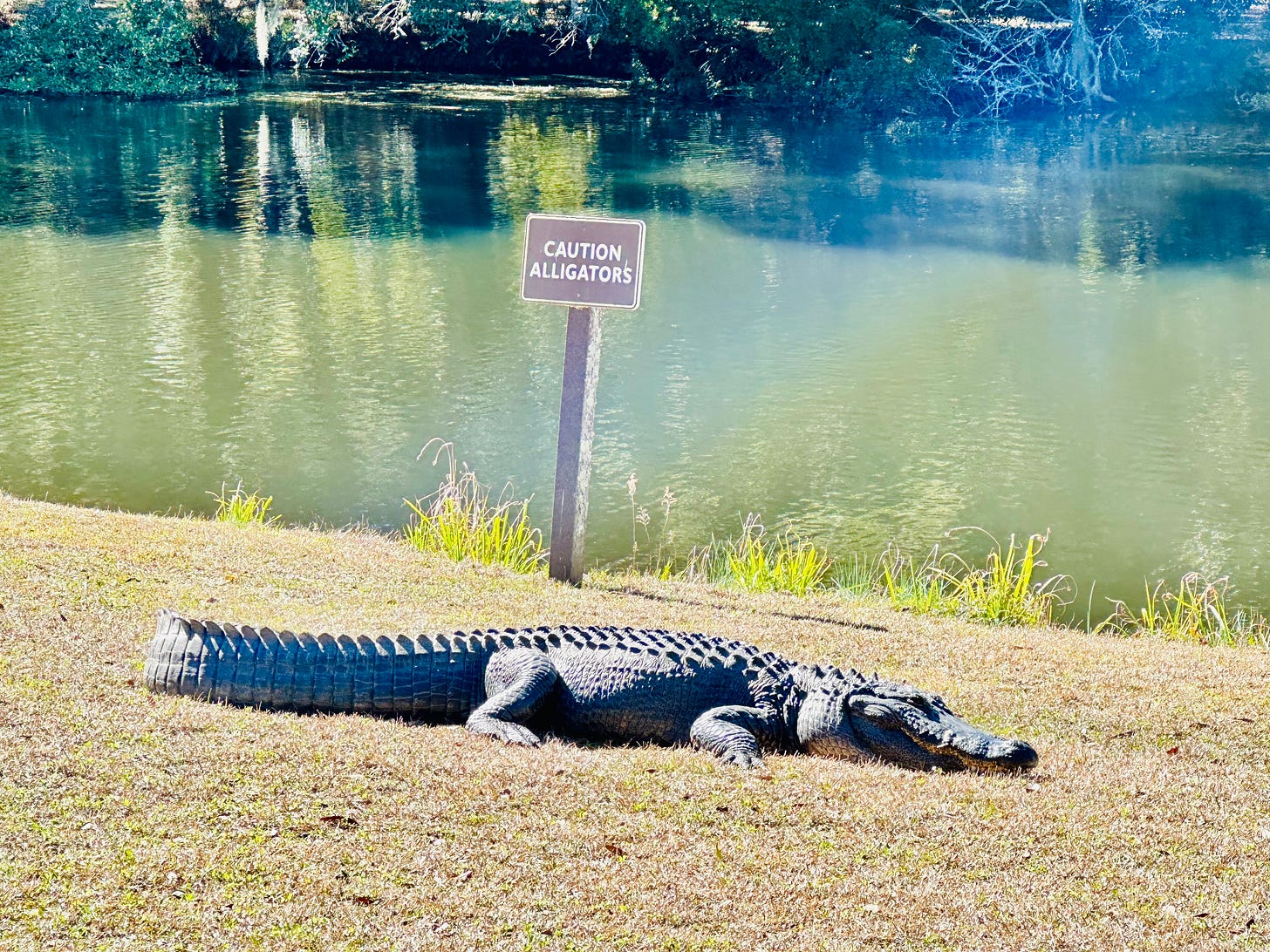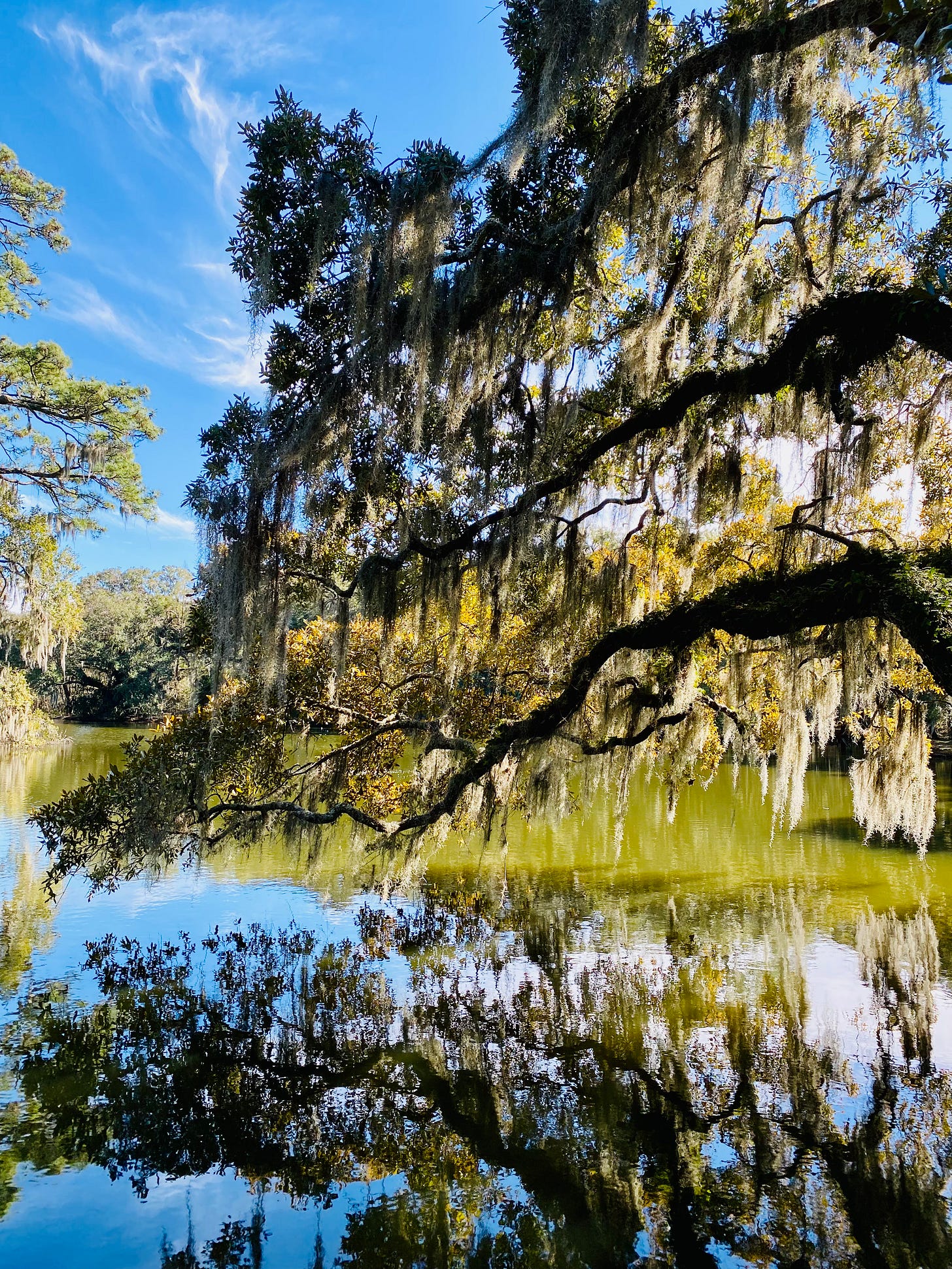Charles Towne Landing
The 17th Century Beginning of a World-Class City
Taking a stroll back in time through majestic oaks draped in Spanish moss, camellias and azaleas in bloom, down a winding path in the warm southern sunshine was truly enchanting.

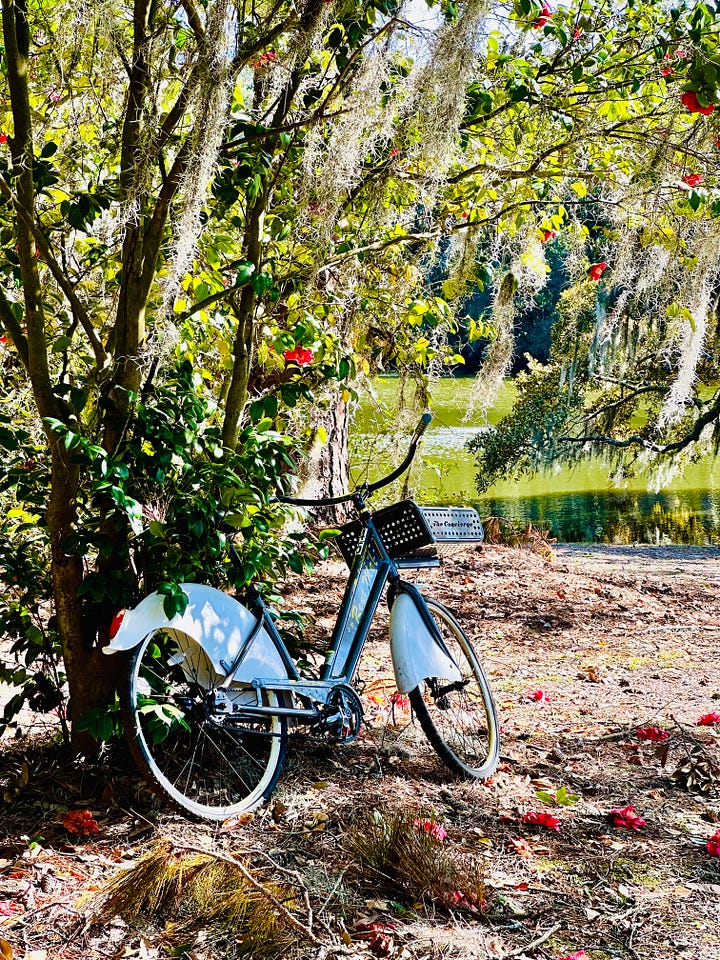
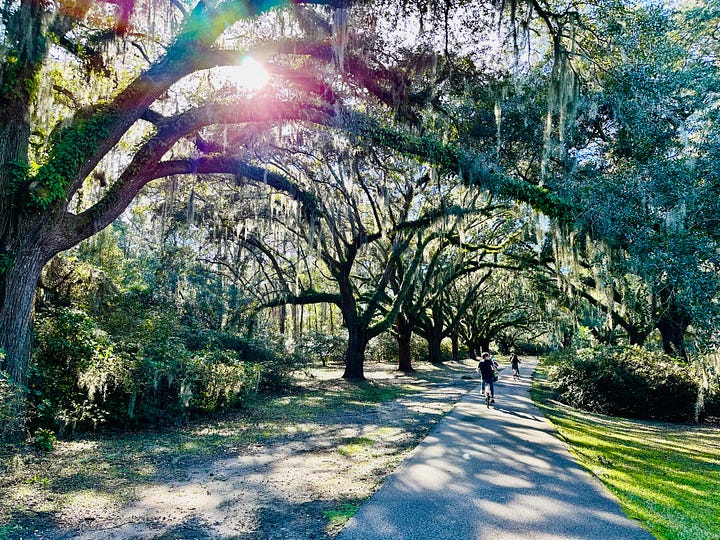
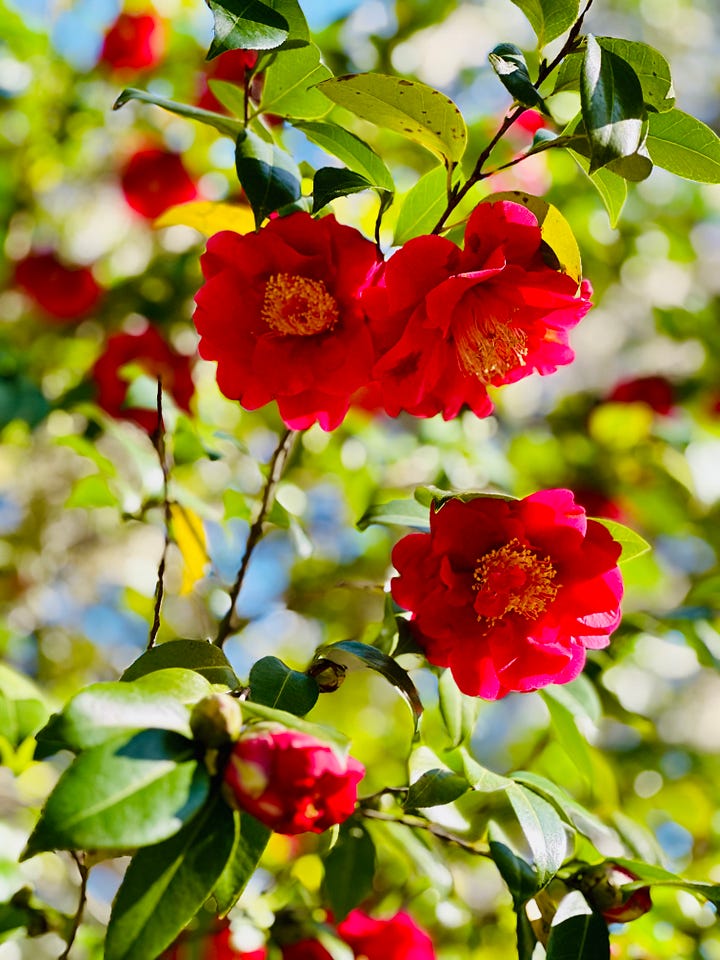
Charles Towne Landing is one of the oldest settlement sites that still exists in America today. A group of English men and women landed there along the Ashley River in 1670 making it the first successful permanent established settlement in South Carolina.
This place is now known as Charleston.
A passageway into colonial life in the region known as The Lowcountry, Charles Towne takes you back to the time and place where about 150 original colonists landed on Albemarle Point. They fortified the area with a palisade wall: a wooden fence of sharpened logs lined with a ditch to prevent access. The waterside defense used earthen fortifications for cannons aimed toward the river and mouth of the Old Towne Creek.
Your imagination is invited to create what once was, from the ruins that have been carefully excavated — and archeological digs are still in process. Crop gardens and a period-correct timber cabin help to recreate the simple life colonists lived.
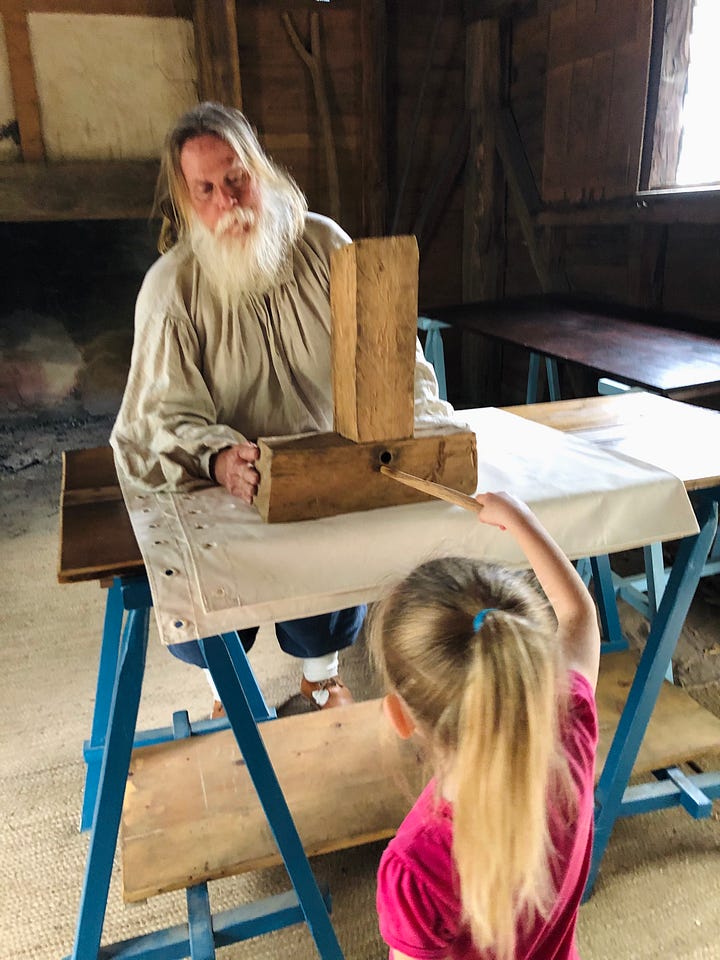
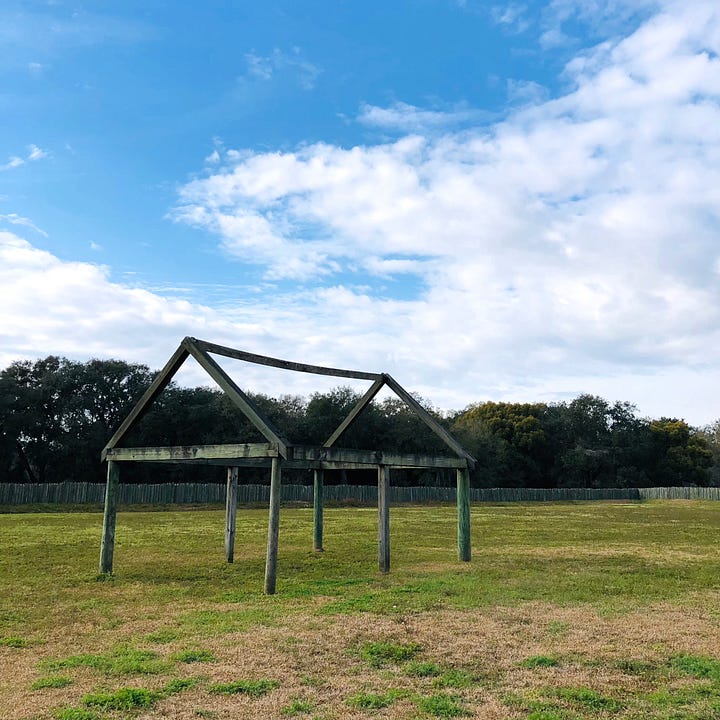
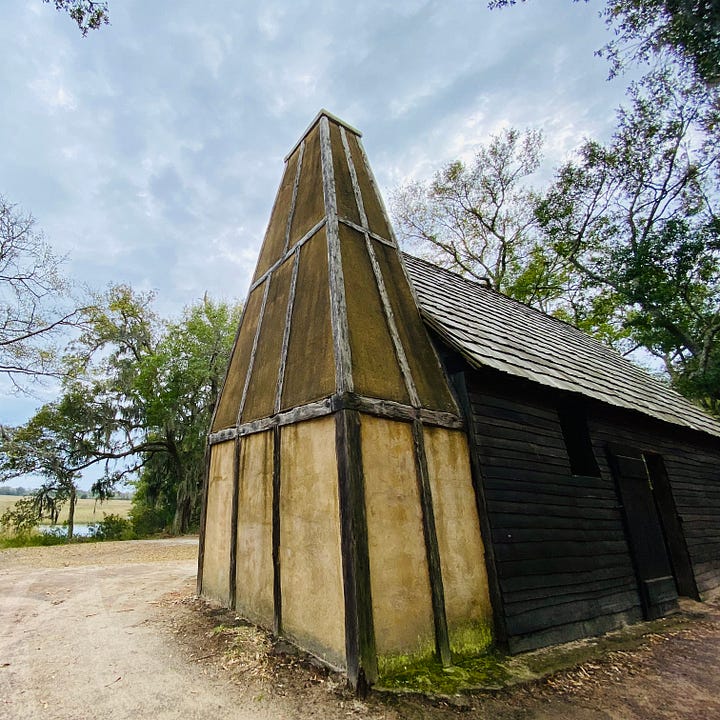
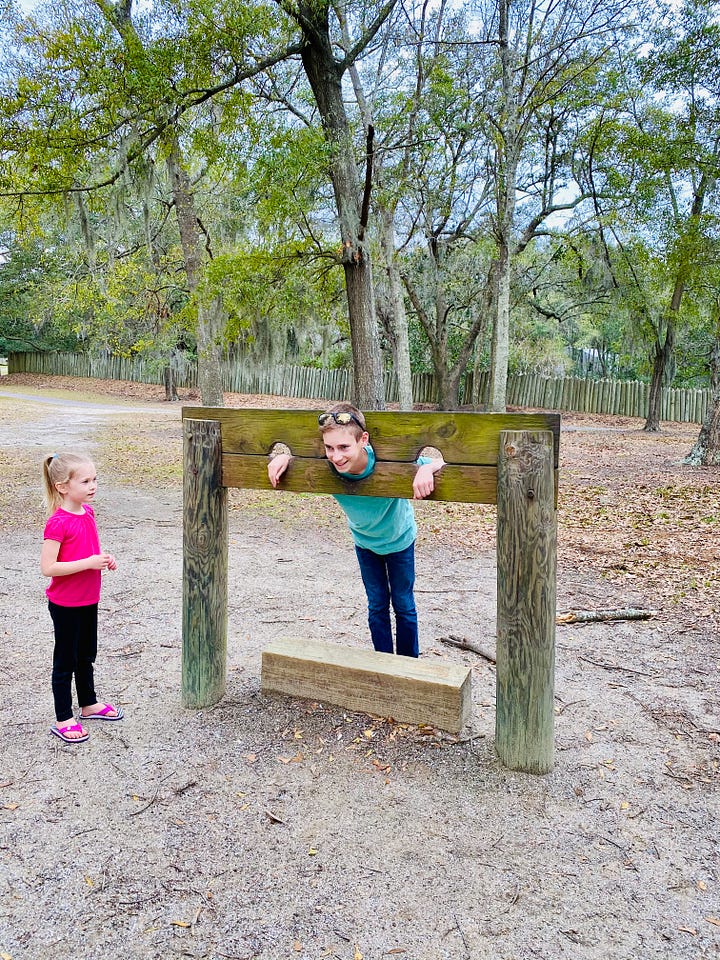
It was fun to see a court set up for a game of Ninepins, a bowling-like game which was common in 17th century colonial America. Henry had carved a set for us to play at home, and gave it to the girls for Christmas.
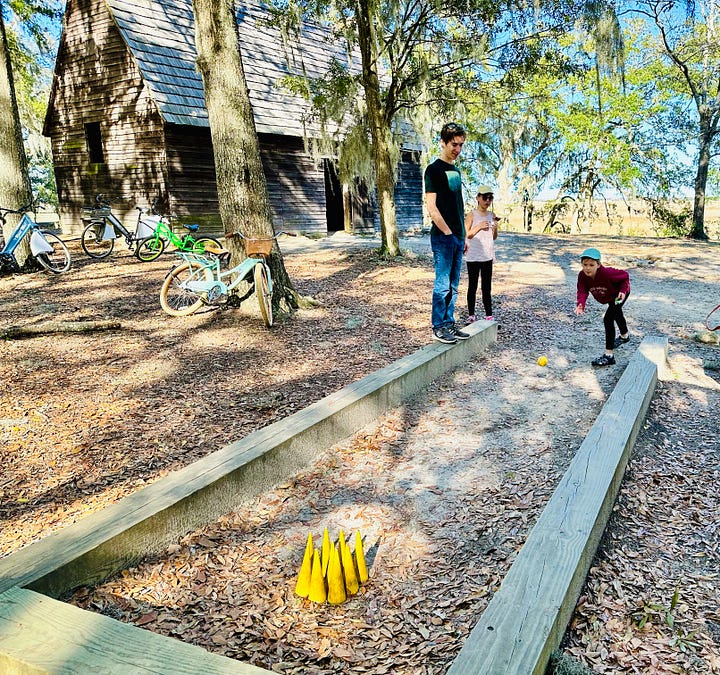
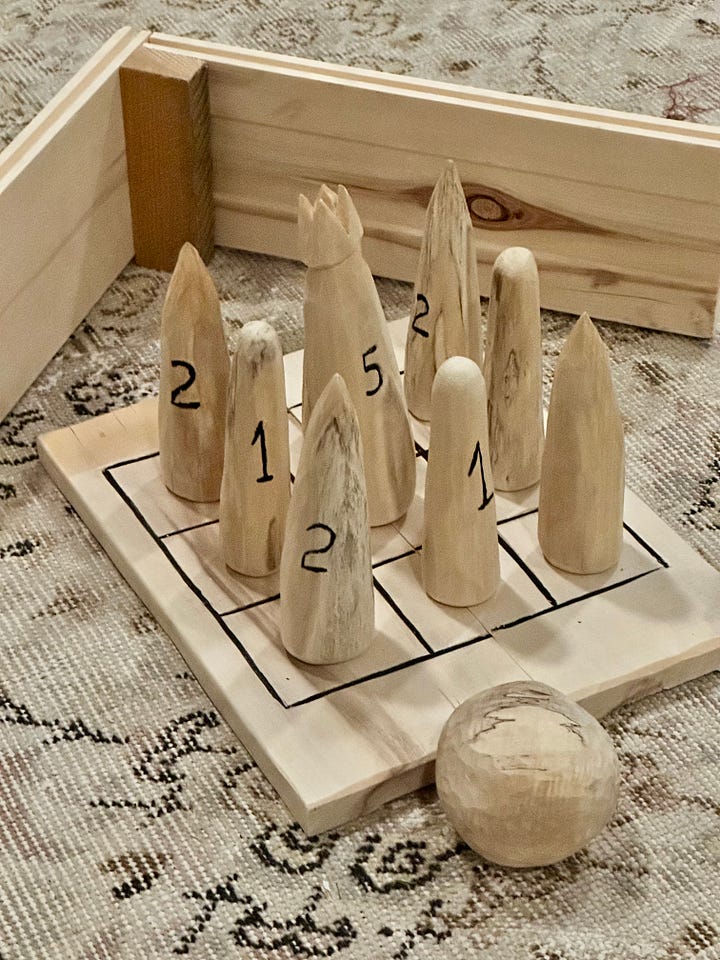
The garden and hundred-year oaks that lead you on the beautiful winding paths are thanks to a woman named Ferdinanda Waring. She inherited a home built in 1840 that was a part of the Old Town. She made it her life's work to fix the home and create the incredible gardens that are adjacent to the settlement. It is said that when she first came to the property in the 1930’s, the house was dilapidated to the point that goats had taken up residence inside!
“We don’t own any land and we don’t own any house. God has given it to us in trust, to make into something better during our lifetime.”
Ferdinanda Legare Waring
This is such a fascinating, enchanting place that even the alligators follow the signs.
The Charles Towne settlement is a contemplative place with enough mighty live oaks and salt marshes to distance you from the bustling, modern city that surrounds. Historic places always remind me to look at how men used the land they needed wisely — to protect themselves, grow food, and build community. I hope we can all learn how to live a bit more honestly like these colonists did almost 400 years ago.


